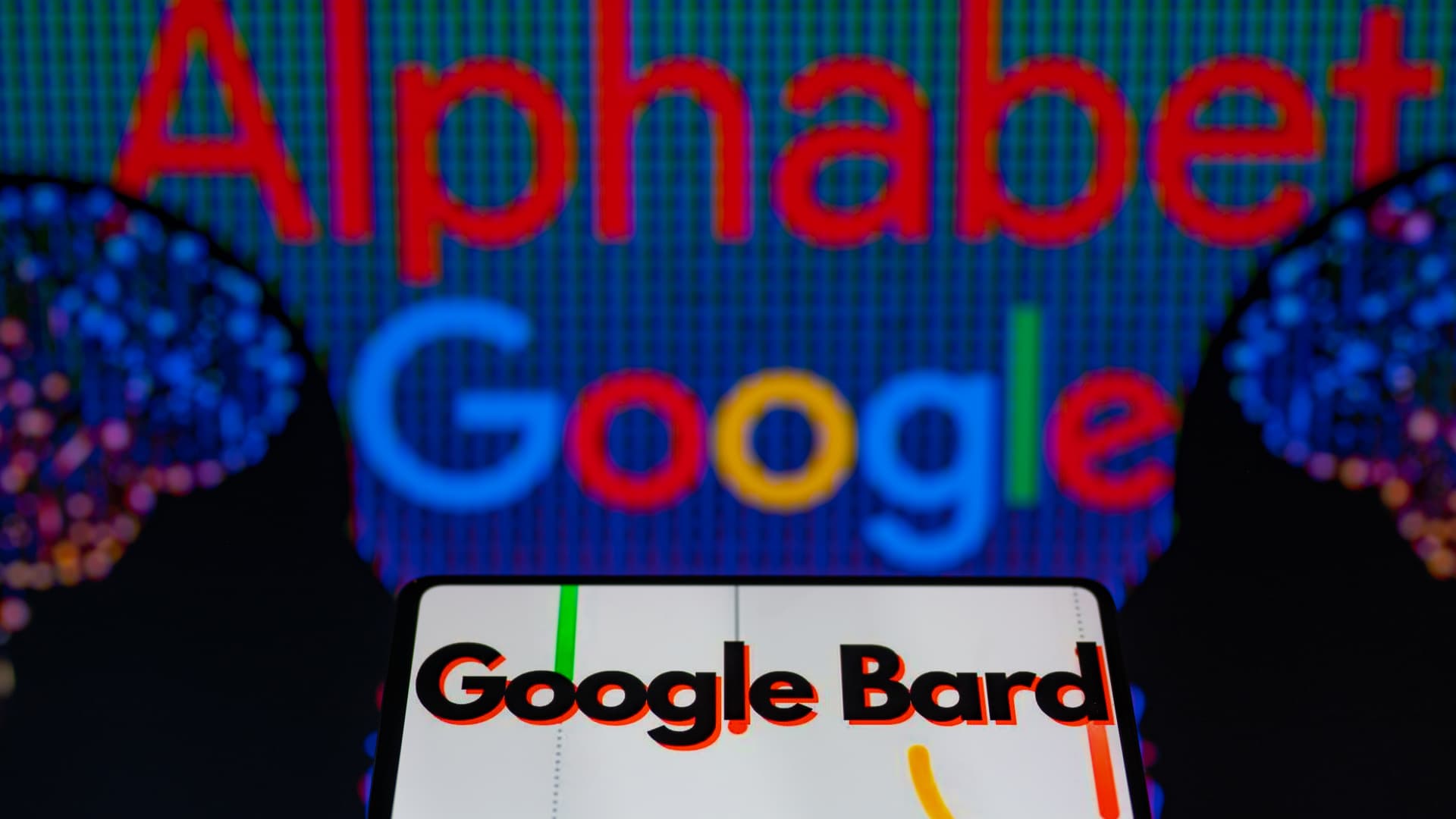
Jonathan Raa | Nurphoto | Getty Images
After months of public chatter about emerging chatbots powered by artificial intelligence, Google is opening its Bard AI platform to a limited number of users.
The company is officially allowing people in the U.S. and U.K. to sign up for its generative AI product at bard.google.com. Google said in a blog post Tuesday that it will be expanding availability over time to more countries and languages. The post, titled “Try Bard and share your feedback,” was authored by Sissie Hsiao, product vice president, and Eli Collins, research vice president.
“You can use Bard to boost your productivity, accelerate your ideas and fuel your curiosity,” they wrote. “You might ask Bard to give you tips to reach your goal of reading more books this year, explain quantum physics in simple terms or spark your creativity by outlining a blog post. We’ve learned a lot so far by testing Bard, and the next critical step in improving it is to get feedback from more people.”
Testers will need to sign in with a Google account.
Google is putting in place some guardrails to try and ensure that conversations between users and the AI don’t spin out of control. The company said it would cap the number of exchanges in a dialogue “to try to keep interactions helpful and on topic.” However, it won’t limit the number of daily chats, a spokesperson said.
Bard will display three different drafts to each response, the company said in a briefing, confirming CNBC’s reporting from earlier this month. Google expects the testing phase to help it understand how often people engage with Bard.
Google Bard displays three drafts in its query responses.
The launch comes after months of rapid testing following the November introduction of OpenAI’s ChatGPT technology, which has since been integrated into a limited version of Microsoft’s search engine Bing.
CNBC reported in January that, since late 2022, Google had been testing its LaMDA technology in the Bard chatbot and on search pages. Google announced the products the following week.
Google was criticized by employees and investors after Bard’s initial rollout, which appeared rushed to compete with Microsoft’s just-announced Bing integration of ChatGPT.
Last week, Google said it would open its AI products to a limited number of users of Workspace, which includes Gmail and Google’s productivity tools.
Expect mistakes
In Tuesday’s blog post, Google said each Bard query will include a “Google it” button underneath the prompt that will open a new tab to the company’s search page. Google sees Bard’s current format as a complementary feature to search, a spokesperson told CNBC.
The company is also warning that Bard may make mistakes.
When a user opens it, a pop-up display says, “Bard is an experiment,” and to “please remember that Bard may give inaccurate or inappropriate responses.” Users are directed to use the “Google It” feature to fact-check Bard’s responses if they’re in doubt.
Google warns users Bard is an experimental product that may give “inaccurate or inappropriate responses.”
Text also appears alongside results indicating that the information “doesn’t represent Google’s views.” Hsiao and Collins wrote that they used Bard to help write the blog post and admitted “it didn’t always get things right.” Inaccuracies are currently a big issue with large language models, or LLMs.
Last month, Google executives asked all employees to help fix Bard’s wrong answers, in a companywide effort.
“While LLMs are an exciting technology, they’re not without their faults,” Tuesday’s post said. “For instance, because they learn from a wide range of information that reflects real-world biases and stereotypes, those sometimes show up in their outputs. And they can provide inaccurate, misleading or false information while presenting it confidently.”
Bard queries will include a “thumbs up” and “thumbs down” option to solicit feedback.
WATCH: OpenAI says its GPT-4 model can beat 90% of humans on SAT





